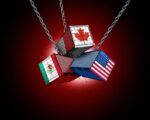By: Leslie Ortiz Martinez
Another outstanding standard in the field of Compliance is ISO 73001:2016 "Anti-Bribery Management Systems", which is designed to help any type of organization, from small and medium-sized companies to large-scale public companies, establish, implement, and maintain an anti-bribery compliance program. The standard includes a series of controls and measures that represent good anti-bribery practices, considered as such at a global level, so it can be applied in any country. These measures include bribes made by the same organizations, their employees or business partners for their own benefit, as well as bribes offered to them in connection with their activities, whether direct or indirect.
The introduction to the standard talks about the negative effects of bribery on society, politics, and the economy and how governments have made efforts at the legislative level to address it, however, it is stressed that the law alone is not enough to solve it and that the participation of organizations is crucial. It is said that bribery risks are not the same for all organizations, it depends largely on the type of activities they develop, the place where they are and the size of these, so this standard specifies the implementation of policies, procedures and controls that are reasonable and proportionate according to the bribery risks faced by each organization.
For the standard, the concept of "organization" includes, among others, a sole trader, company, corporation, firm, enterprise, authority, partnership, charity or institution, or a part or combination thereof, whether incorporated or not, public, or private.
It is important to mention that the purpose of the standard focuses on preventing, detecting, and confronting bribery, without addressing specific issues such as fraud, cartels and other antitrust and competition crimes or money laundering.
Generically, the standard defines bribery as "the offer, promise, delivery, acceptance or solicitation of an undue advantage of any value (which may be financial or non-financial in nature), directly or indirectly, and regardless of its location, in violation of applicable law, as an inducement or reward for a person to act or fail to act in connection with the performance of that person's duties", however it is important to mention that the correct definition will be the one provided by the applicable legislation for each organization.
This standard is certifiable and what is required is that the organization develop a management system that implements reasonable and appropriate measures and controls to help prevent, detect and address bribery which may include among other things: i) risk assessments, understanding the latter as effects or deviations from what is expected, whether positive or negative; ii) personnel controls and training, which includes directors, officials, employees and temporary and volunteer workers since each one represents different types and degrees of risk; iii) leadership, commitment and responsibility of management; iv) financial, commercial and contractual controls; v) reporting, monitoring, investigation and review of measures and controls implemented.
Other components highlighted in the management system refer in the first place to the Anti-Bribery Policy adopted by the organization, which points to its intentions and how those intentions are formally expressed by its top management or its governing body. On the other hand, we find due diligence in projects and business partners understood as the process to assess in greater detail the nature and extent of bribery risk and to help organizations make decisions regarding specific transactions, projects, activities, business partners and personnel.
Finally, it is of utmost importance to maintain a corrective action and continuous improvement of the management system adopted, to ensure that appropriate measures are being taken on a case-by-case basis, which may result in assurances to investors, employees, customers, and other interested parties that an organization is taking reasonable steps to prevent bribery.
As a reference and for more information you can consult the standard in the following links:









